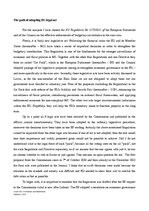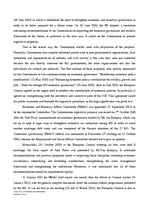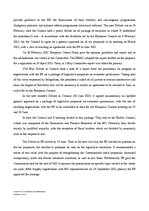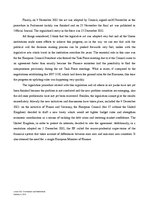-
The Path of Adopting EU Legal Act
The essential role in this case was for the European Council President who formed the Task Force meeting due to it the Council came to an agreement faster than usually because the Finance ministers had the possibility to find the compromises previously during the six Task Force meetings. What is more, if compared to the negotiations establishing the 1997 SGP, which laid down the ground rules for the Eurozone, this time the progress on updating rules was happening very quickly.
The legislation procedure related with this regulation and all others in six packs have not yet been finished because the problem is not combated and the new problem countries are emerging, also the old ones problematic have not yet been recovered. Besides, the legislation cannot give the results immediately. Already the new initiatives and discussions have taken place, included the 9 December 2011: on the initiative of France and Germany, the European Council (the 27 without the United Kingdom) decided to draft a new treaty which would set tighter budget rules and strengthen economic coordination as a means of tackling the debt crisis and restoring market confidence. The United Kingdom, in order to protect its interests, decided to veto the agreement. Additionally, in a resolution adopted on 1 December 2011, the EP called for macro-prudential supervision of the financial system that takes account of differences between euro area and non-euro area countries. It also stressed the need for: a single European Minister of Finance.
…
The path of adopting EU legal act. For the analyses I have chosen the EU Regulation No 1173/2011 of the European Parliament and of the Council on the effective enforcement of budgetary surveillance in the euro area.




